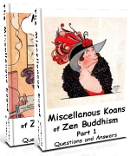Chan's World
The Only Place to Solve Koans
The Koans of Chan's World are normal stories. OK, not that normal. They were written in medieval China.
Sometimes you need to know something about this background, most of the time you don't.
Legends and mysteries, strange events in Buddhist monasteries or just riddles, that's what Koan stories are about.
But, unlike riddles, Koans have no answers but only a meaning, which is the Koan solution.
More information below. If you run into problems: Meditation might be helpful.
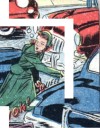 Example two
Example two
Koan Example
A robber comes into a monk's room at night. There's nothing to steal but a talking tree in one corner.
The robber runs away.
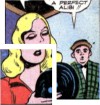 Example three
Example three
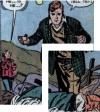 Example four
Example four
That's exactly the question of every Koan-story: What does it mean?
To answer this question is to answer the Koan.
 Example five
Example five
"The robber just steals the tree" or "never try to rob a monk", this kind of answer won't do in Zen.
The answer can only be found in "Chan's World".
Where's that?
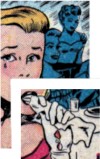 Journey one
Journey one
A Journey to Chan's World
The base layer of reality, the bedrock of the world (in history, today and in future), that's what some Buddhists call "Chan's World".
Unfortunately reality is much too big to explore down to its bedrock.
 Journey two
Journey two
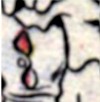 Journey three
Journey three
1. Down there only "real" things can be found, e.g. trees and houses, birds and people, cars and horses, rivers and oceans, men and women.
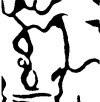 Journey four
Journey four
3. In addition, "things" on the bedrock are reduced to patterns. On a screen these become black shapes, lines and dots.
Welcome to Chan's World, where only the "bare bones" of reality exist.
Chan's World: The Bare Bones of Reality
 reality one
reality one
 reality two
reality two
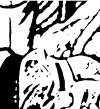 reality three
reality three
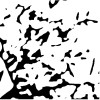 reality five
reality five
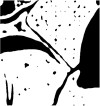 reality four
reality four
The Talking Tree in Chan's World
The "real" things of the talking tree Koan are two people and a tree. Everything else is gone. They are represented by patterns of black shapes, lines and dots.
 Tree
Tree
But hang on, there's somebody else that has to be included: the "Person" that wants to solve the Koan.
"Person" is also a black shape (For more information go to The Person that calls itself 'I').
In this form, Person is able to join the Koan and to convert itself into every other one of the Koan's black shapes.
How Person Finds the Koan Solution
 Person Tree
Person Tree
In this Koan Person may intermingle with the black shape of the tree. Later, back in the real world, Person will act as tree.
Rasing the arms, moving like a tree in the wind. That's the Koans' meaning: be a tree!
Warning: If you are not happy with the meaning you found, don't start thinking about a better one, but meditate until you're satisfied.
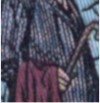 Person tree
Person tree
The explanation of the tree solution could be: don't be distracted by mysteries.
Person is the tree, the tree is Person. They are not two but one.
 Person tree
Person tree
But it's needed. Only Person is able to enter Zen's World, intuitively catch the Koans' meaning and present it.
Go to Person that calls itself 'I'
Go to Mummonkan Koans
Return to Home Page from Chan's World

